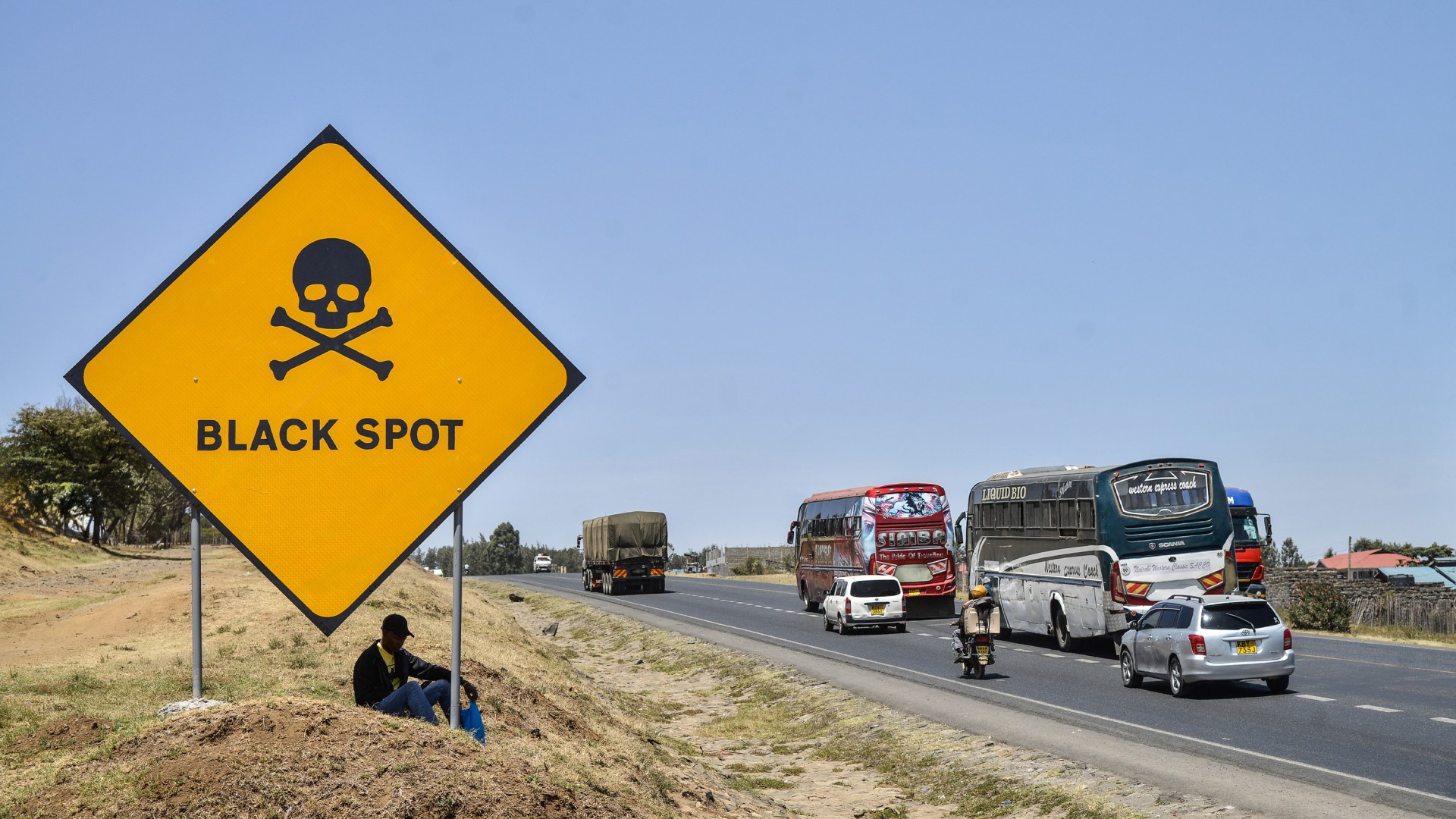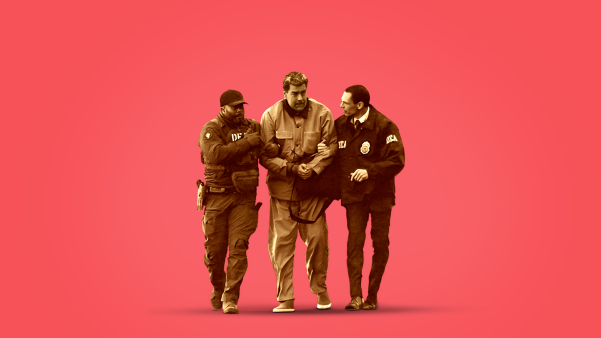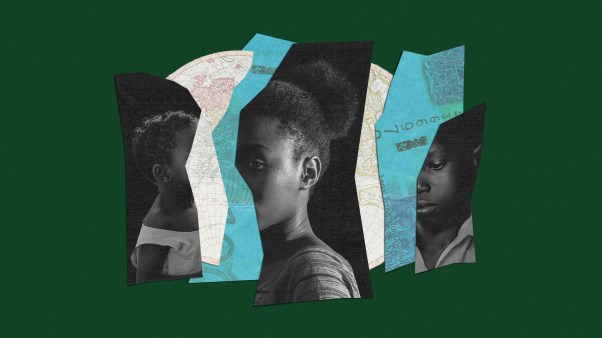Joseph Wachana has sat under a large fig tree in Bungoma County, Kenya, for more than ten years now. He earns a few coins from locals who bring their old shoes for repair. Every morning, he jumps on one leg from his home to the fig tree—about 500 meters—supporting himself with a short wooden stick. He returns home the same way at night.
His spot at midodo (fig tree) market contains his investment—a small wooden box holding pieces of leather, different-colored strings, a pair of scissors, knives, and sharpening stones and needles. Next to him is a sack full of old shoes and sandals, along with old handbags.
Wachana—a once-energetic police officer—makes shoes for a living because a road accident in October 2012 left him with one leg.
“I was crossing the road heading home after work, and the next place I found myself was in a hospital bed,” Wachana said. A speeding motorcycle knocked him down on a zebra crossing (a pedestrian crosswalk) in the town of Busia.
Despite Wachana’s serious injuries, it took more than two hours for someone to take him to a hospital. Crowds gathered at the scene, blocking the road and causing a heavy traffic jam. A mob attacked the motorcyclist, focused on beating him up instead of helping Wachana’s bleeding leg.
Only when the police arrived and cordoned off the scene did someone transport him. The local hospital couldn’t offer more than basic first aid to stop the bleeding, so they referred him to Moi Teaching and Referral Hospital in Eldoret—a three-hour journey away.
According to the World Health Organization’s 2023 Road Traffic Injuries fact sheet, “Delays in detecting and providing care for those involved in a road traffic crash increase the severity of injuries. … Delays of minutes can make the difference between life and death.”
At the hospital in Eldoret, road crash victims filled the casualty unit. Ambulances came and went the whole night. Some patients died before admittance. Others waited for emergency surgery. Men, women, and children screamed in pain.
“It was[n’t] until around nine the following morning when my brother was booked into the [operating] theater,” Wachana’s younger sister Penina Naliaka said. The doctor told the family that Wachana’s leg had broken in multiple places.
Hospital staff said the family needed to bring eight pints of blood before he could have surgery to set the leg. This delayed treatment several more days, as family members traveled to the hospital to donate blood.
“The leg was rotting very fast toward the upper part,” Wachana recalled. “One doctor came and checked it and said the only option was to cut off the leg before the damage reaches the sensitive organs, which could be life threatening.”
Doctors amputated his leg above the knee. “This was a new beginning in my life, but I thank God I am still alive,” he said. “Many people who came in the same hospital never made it. They died.”
Survivors such as Wachana struggle to recover. Financial compensation is sparse, and work opportunities decrease. Some survivors, like Wachana, also lose their families—Wachana’s wife took their children and left when he couldn’t provide.
In Kenya, deaths and injuries from road accidents have increased for years. In 2024, the Kenya National Bureau of Statistics (KNBS) recorded 11,173 road crashes, an almost 12 percent rise from 2023. Casualties totaled 24,245 people in 2024. The country’s traffic-accident death rate more than doubles that of the US—Kenya with 28 deaths per 100,000 people, compared to just under 13 per 100,000 people in the US.
The KNBS attributed most road crashes to reckless and intoxicated driving. Additionally, gig drivers who do not own their vehicles may drive recklessly in an effort to pack as many ridesharing jobs into their days as possible.
Concerned church leaders in Kenya have held special prayer events at “black spots”—areas with high incidents of road crashes—to ask for divine intervention to reduce accidents. Road traffic injuries cost Kenya’s health care system $46 billion annually. As with Wachana, accident victims may face long wait times for transportation from the scene to a health facility for treatment.
Barklay Okero, a community engagement officer at the Kenya Red Cross, warned that post-crash care is severely underdeveloped. He said challenges include ambulance delays due to traffic congestion and limited coverage, lack of public knowledge of how to help those injured in a crash, poor police coordination, and limited access to trauma care.
Kenya’s government has launched the National Road Safety Action Plan 2024–2028 in an attempt to curb the alarming number of accidents. Some county governments have set up quick response centers to improve emergency response along dangerous roads where crashes are frequent.
In Kenya, a police officer who gets injured while on duty is supposed to receive compensation from the government. However, the complicated process prevents many from getting the help they need. In 2024, a task force led by former Kenyan chief justice David Maraga looked into the police injury payout system. Their report showed that many of the injured police officers are left without any meaningful help.
Since compensation claims need to be submitted in Nairobi, victims must travel to the capital to follow up on their claims. In Wachana’s case, that journey takes more than ten hours. And because Wachana was still in uniform but had signed out of work at the time of the accident, it’s unclear whether he qualifies for benefits.
“I tried to follow up, but I did not succeed,” Wachana said. “I ended up spending the little money I had saved.” Yet he has not lost hope. “The Bible assures me that God will never abandon his people.”













